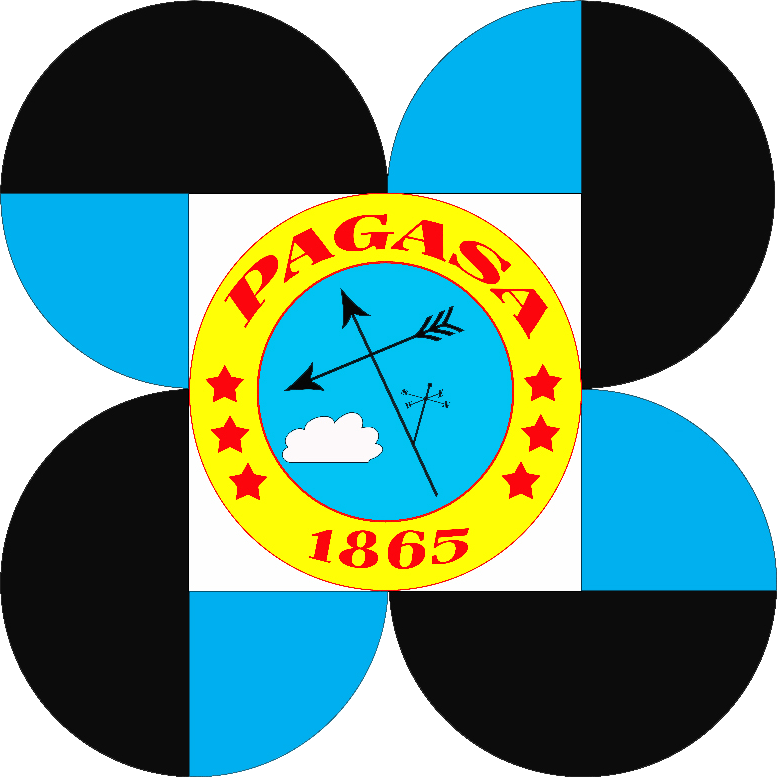Hybrid Solar Eclipse-Visible as Partial Solar Eclipse in Philippines
20 April 2023
On April 20, 2023, the Moon will pass in front of the Sun, resulting in a HYBRID SOLAR ECLIPSE that can be seen in Western Australia, East Timor, and Eastern Indonesia (West Papua). A Hybrid Solar Eclipse combines an Annular and a Total Solar Eclipse. For observers in various locations along the eclipse's path, it can produce a variety of events. In the beginning, people in the path of the eclipse may see a partial solar eclipse, an annular solar eclipse, or a brief "ring of fire". Then, during the Hybrid Solar Eclipse’s middle phase, they may see a total solar eclipse, after which it will change back to an annular solar eclipse, then to a partial solar eclipse, before the eclipse ends.
The Totality of Hybrid Solar Eclipse cannot be observed from Manila. However, it can be seen as a PARTIAL SOLAR ECLIPSE, with maximum eclipse obscuration at 23.7°. The partial solar eclipse begins at 11:44 AM, with the maximum eclipse occurring at 12:55 PM and comes to an end at 2:04 PM. Elsewhere in the Philippines, the Partial Solar Eclipse can be observed with a minimum obscuration of 12% to the north (Basco, Batanes) and a maximum obscuration of 58% to the south (Balut Island-Municipality of Sarangani).
The entire Philippines will be able to see the Partial Solar Eclipse, as well as Southeast Asia, the East Indies, Australia, Solomon Islands, Vanuatu, Papua New Guinea, and New Zealand.
Along with details of the eclipse’s circumstances, the Partial Solar Eclipse can be seen in these chosen areas:
|
|
|
|
|
|
|
|
Basco Batanes |
12:09:00.4 PM |
1:05:42.3 PM |
2:00:49.1 PM |
12.0 |
1h 51m 48.7s |
|
Laoag City |
11:59:10.9 AM |
12:59:56.7 PM |
1:59:17.8 PM |
14.6 |
2h 00m 6.90s |
|
Tuguegarao |
11:56:50.9 AM |
1:01:16.4 PM |
2:03:55.7 PM |
17.8 |
2h 07m 4.80s |
|
Baguio City |
11:51:35.9 AM |
12:57:16.1 PM |
2:01:26.7 PM |
18.7 |
2h 09m 50.8s |
|
Dagupan City |
11:50:16.0 AM |
12:56.1?’.1 PM |
2:00:52.5 PM |
19.0 |
2h 10m 36.5s |
|
Manila |
11:44:23.8 AM |
12:54:56.2 PM |
2:03:51.9 PM |
23.7 |
2h 19m28.1s |
|
Palawan |
11:25:27.7 AM |
12:41:54.9 PM |
1:57:48.8 PM |
31.0 |
2h 32m 20.7s |
|
Legaspi City |
11:40:27.2 AM |
12:57:36.2 PM |
2:12:13.1 PM |
32.7 |
2h 31m 45.8s |
|
Tacloban City |
11:34:57.8 AM |
12:56:46.4 PM |
2:15:34.6 PM |
40.6 |
2h 40m 36.8s |
|
Cebu City |
11:31:00.0 AM |
12:53:09.4 PM |
2:12:46.2 PM |
41.0 |
2h 41m 46.2s |
|
Surigao Del |
11:30:44.7 AM |
12:55:07.9 PM |
2:16:22.2 PM |
45.7 |
2h 45m 37.4s |
|
Molugan, El Salvador City |
11:25:48.6 AM |
12:51:01.9 PM |
2:13:35.9 PM |
47.8 |
2h 47m 47.3s |
|
Davao City |
11:22:44.7 AM |
12:50:36.5 PM |
2:15:27.2 PM |
53.8 |
2h 52m 42.6s |
|
General Santos City |
11:18:52.6 AM |
12:47:27.4 PM |
2:13:24.1 PM |
55.6 |
2h 54m 31.5s |
|
Balut Island, Sarangani |
11:17:23.9 AM |
12:46:52.6 PM |
2:13:39.0 PM |
58.2 |
2h 56m 15.1s |
The most recent partial solar eclipse to pass through the Philippines was on June 21, 2020. If our countrymen miss the chance to watch the April 20, 2023, Partial Solar Eclipse, it would be more than five (5) years before the Philippines sees another one; the next partial solar eclipse will take place on July 22, 2028.
PAGASA strongly advised the general public to always use safe solar viewing equipment, such as a safe handheld solar viewer, when observing a partial solar eclipse directly with their eyes. Be aware that eclipse glasses are NOT conventional sunglasses; regular sunglasses, regardless of how dark they are, should not be used to observe the Sun. The general public is urged to use eclipse safety instruments like pinhole cameras or telescope projections as a precaution. These are the safest ways to see the eclipse.
The following are some of the pointers in observing a Partial Solar Eclipse:
-
AVOID staring directly at the Sun with bare eyes.
-
RESIST the urge to use a standard telescope or binoculars without a solar filter to observe the Sun.
-
AVOID using smoked glass or sunglasses when facing the Sun.
-
AVOID using camera film or negatives.
-
Attempting to see the Sun through foil or translucent candy wrappers is not advised.
-
DON'T TRY TO VIEW THE ECLIPSE BY REFLECTING THE SUN OFF A MIRROR, A CD, OR ANY BODY OF WATER, EVEN IN A PALE OF WATER.
- Using binoculars or a telescope wn ie wearing specialized solar glasses will cause the glasses to melt due to the heat from the concentrated sunlight.
- AVOID using the solar filters that come with your telescope since the concentrated light may cause the eyepiece to break, allowing dangerous amounts of sunlight to enter and blind your eyes.
-
A broken, scratched, or hole-filled Mylar film should not be used, nor should specialized eclipse glasses.
-
If you’re using your telescope to project an image of the eclipse, DON’T leave the finder-scope of the telescope unattended since young children might accidentally look through it.
For more information, kindly contact Engr. Ma. Rosario C. Ramos, Chief of Space Science and Astronomy Section (SSAS) at the telephone number (02) 8284-0800 loc 3016 or send an email at astronomy@pagasa.dost.gov.ph
SGD.
VICENTE B. MALANO, Ph.D.
Administrator
